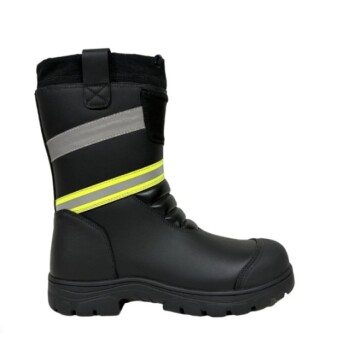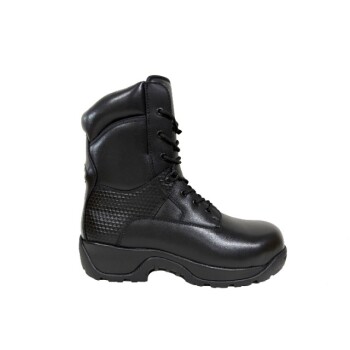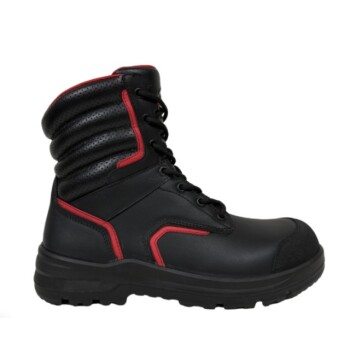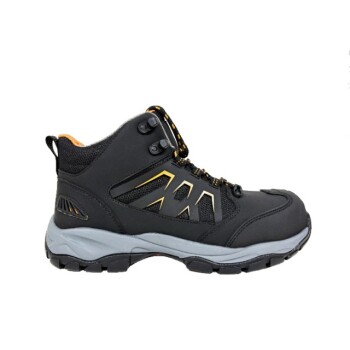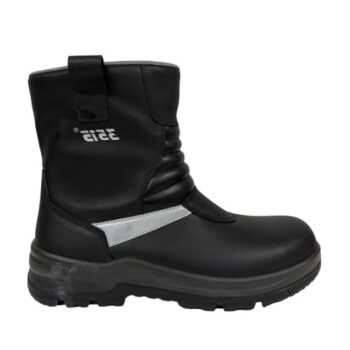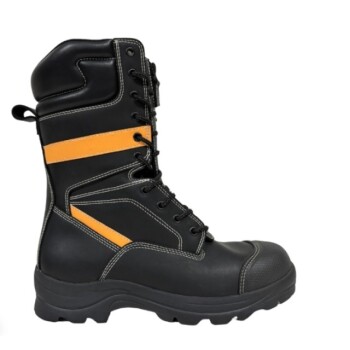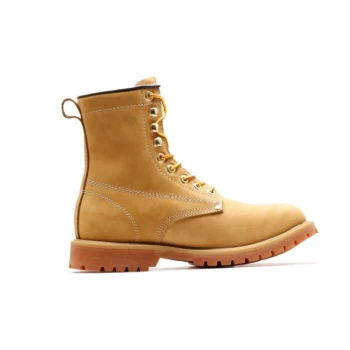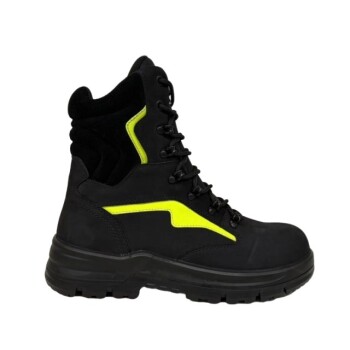In the fire service, firefighter's boots are most commonly called bunker boots or turn-out boots. These names refer to their role as part of the full protective ensemble—known as bunker gear or turnout gear—that firefighters must don rapidly when an alarm sounds.
The name of a firefighter's boot is directly tied to its function: being part of a complete protective system that is always ready for a rapid "turnout" from the firehouse "bunkers."
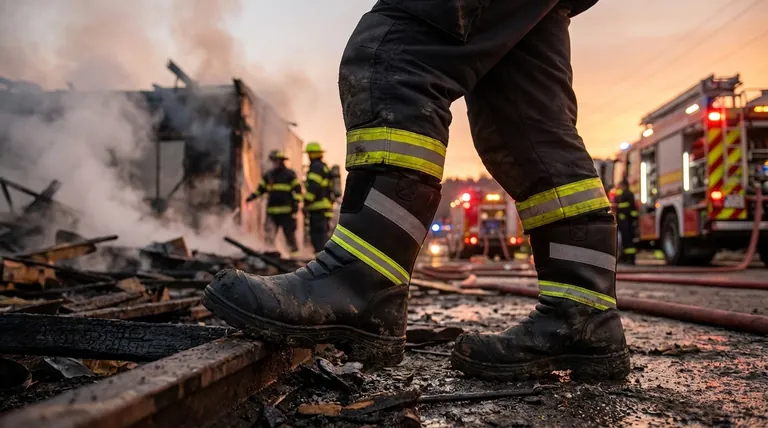
The "Why" Behind the Name
The terminology for firefighting gear is rooted in the history and daily routine of the profession. Understanding the names provides insight into the high-stakes nature of the job.
From the Bunks to the Fireground
The term bunker gear comes from the "bunk rooms" where firefighters sleep. The gear is kept next to the bunks, pre-arranged so they can step into their boots and pull up their pants in a single, fluid motion.
Answering the Call to "Turn Out"
Similarly, turnout gear refers to the act of "turning out" for an emergency call. When the alarm sounds, the crew must leave the station immediately, and this is the gear they wear to do it.
Key Features of Modern Firefighter Boots
These boots are not simply work boots; they are highly specialized pieces of life-saving equipment, engineered to withstand extreme conditions. The design and materials are dictated by stringent safety standards.
Meeting Protective Standards
All certified firefighting boots must meet standards for a variety of hazards. This includes reinforced safety toes to protect from impact and compression, as well as puncture-resistant soles to guard against nails and other sharp debris on the fireground.
The Evolution of Materials
While functionality is paramount, materials have evolved to improve comfort and reduce fatigue.
Traditional rubber boots have long been the standard. They offer excellent waterproofing and are relatively easy to decontaminate after exposure to hazardous materials.
A newer generation of leather bunker boots has become increasingly popular. These boots often provide a better fit, reduce weight, and offer more flexibility, which makes tasks like driving apparatus or climbing ladders easier.
Understanding the Trade-offs
The choice between traditional rubber and modern leather is not just about preference; it involves a clear set of operational trade-offs for a firefighter or department.
The Case for Rubber Boots
Rubber remains a trusted material primarily for its inherent waterproof qualities and ease of cleaning. In situations involving significant water or hazardous chemical spills, the non-porous surface of rubber is a distinct advantage.
The Advantage of Leather Boots
Leather boots are often compared to high-performance hiking boots. They are typically lighter and provide a more anatomical fit, which can significantly reduce foot and leg fatigue over long incidents or shifts. Their flexibility enhances a firefighter's agility.
Making the Right Choice
The selection of a boot depends entirely on the department's priorities, balancing protection, durability, and firefighter wellness.
- If your primary focus is maximum water protection and easy decontamination: Traditional rubber boots remain an excellent and reliable standard.
- If your primary focus is reducing fatigue and improving mobility for the firefighter: Modern leather boots are increasingly the superior option.
Ultimately, the right boot is the one that best protects the firefighter while enabling them to perform their demanding job safely and effectively.
Summary Table:
| Boot Type | Primary Material | Key Advantages | Best For |
|---|---|---|---|
| Bunker/Turnout Boots | Rubber | Maximum waterproofing, easy decontamination | Wet environments, chemical exposure |
| Leather Bunker Boots | Leather | Lightweight, flexible, reduced fatigue | Long shifts, improved mobility |
Protect Your Team with Professional-Grade Firefighter Boots
As a large-scale manufacturer, 3515 produces a comprehensive range of certified safety footwear for distributors, brand owners, and bulk clients. Whether your department requires traditional rubber boots for maximum waterproofing or modern leather boots for enhanced mobility and comfort, we have the production capabilities and expertise to meet your specific needs.
Contact 3515 today to discuss custom solutions for your firefighting gear requirements.
Visual Guide

Related Products
- High Performance Fire-Retardant Waterproof Safety Boots
- Safety Footwear Wholesale Manufacturer for Custom OEM/ODM Production
- Wholesale Customizable Safety Boots Durable & Protective Footwear Manufacturing
- Premium Grain Leather Safety Boots for Bulk Supply
- Premium Wholesale Waterproof Safety Boots High Performance Protection for Industrial Markets
People Also Ask
- When are steel-toe boots required or recommended? Essential Guide to Workplace Foot Safety
- How does the weight of steel-toe boots compare to composite-toe boots? Uncover the Real Trade-Offs
- What factors should be considered when choosing between steel and composite toe caps? Ensure Maximum Safety and Comfort
- Which industries commonly use steel toe boots? Essential Foot Protection for High-Risk Jobs
- What standards are used to test and rate safety-toe footwear? Ensure Your Boots Are Truly Protective
